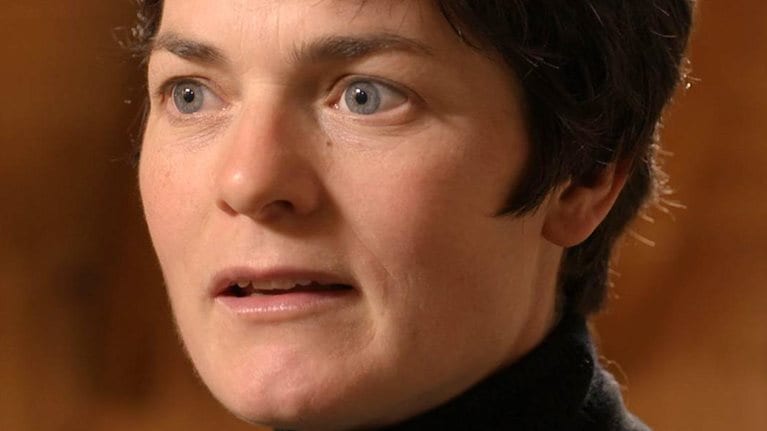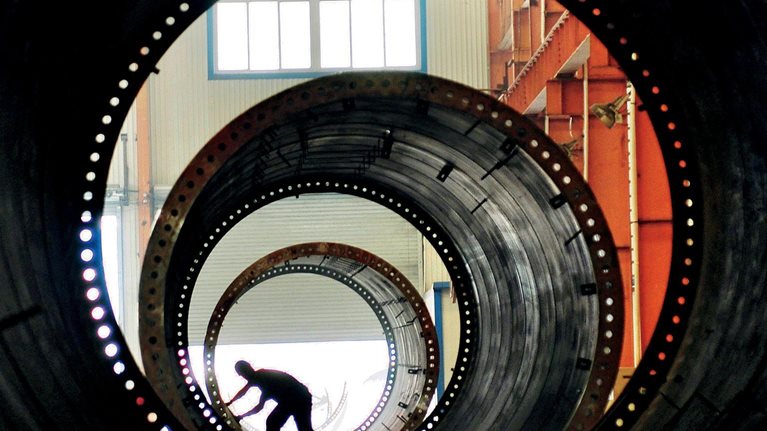Europe’s economy has generated unprecedented wealth over the past century. Part of the success is attributable to continuous improvements in resource productivity—a trend that has started to reduce Europe’s resource exposure. At the same time, resource productivity remains hugely underexploited as a source of wealth, competitiveness, and renewal. Our new study, Growth within: A circular economy vision for a competitive Europe,1 provides new evidence that a circular economy, enabled by the technology revolution, would allow Europe to grow resource productivity by up to 3 percent annually. This would generate a primary-resource benefit of as much as €0.6 trillion per year by 2030 to Europe’s economies. In addition, it would generate €1.2 trillion in nonresource and externality benefits, bringing the annual total benefits to around €1.8 trillion compared with today.
This would translate into a GDP increase of as much as seven percentage points relative to the current development scenario, with an additional positive impact on employment. Looking at the systems for three human needs (mobility, food, and the built environment), our study concludes that rapid technology adoption is necessary but not sufficient to capture the circular opportunity. Instead, circular principles must guide the transition differently from those that govern today’s economy. Pursued consistently, the economic promise is significant and the circular economy could qualify as the next major European political-economy project.
Europe’s economy remains very resource dependent. Views differ on how to address this against an economic backdrop of low and jobless growth as well as the struggle to reinvigorate competitiveness and absorb massive technological change.
Proponents of a circular economy argue that it offers Europe a major opportunity to increase resource productivity, decrease resource dependence and waste, and increase employment and growth. They maintain that a circular system would improve competitiveness and unleash innovation, and they see abundant circular opportunities that are inherently profitable but remain uncaptured.
Others argue that European companies are already capturing most of the economically attractive opportunities to recycle, remanufacture, and reuse. They maintain that reaching higher levels of circularity would involve an economic cost that Europe cannot afford when companies are already struggling with high resource prices. They further point out the high economic and political cost of the transition.
We looked at the issues to provide a fact base for decision makers contemplating the transition to a more circular economy. The insights of our report rest on extensive desk research, more than 150 interviews, economic modeling, the largest comparative study to date of the employment effects of a circular-economy transition, and deep analysis of three human needs that together account for 60 percent of European household spend and 80 percent of resource use—mobility, food, and housing. The research and analysis yielded nine major conclusions.
1. The European economy is surprisingly wasteful in its model of value creation and—for all practical purposes—continues to operate a take-make-dispose system.
In 2012, the average European used 16 metric tons of materials. Sixty percent of discarded materials were either put in a landfill or incinerated, while only 40 percent were recycled or reused. In value terms, Europe lost 95 percent of the material and energy value, while material recycling and waste-based energy recovery captured only 5 percent of the original raw-material value.2 Even recycling success stories like steel, polyethylene terephthalate (PET), and paper lose 30 to 75 percent of the material value in the first-use cycle. On average, Europe uses materials only once.
The sector analysis also found significant waste in sectors that many would consider mature and optimized. For example, the average European car remains parked 92 percent of the time, 31 percent of food is wasted along the value chain, and the average European office is used only 35 to 50 percent of the time, even during working hours. And use cycles are short. The average manufactured asset lasts only nine years (excluding buildings).
In total, this way of producing and using products and resources costs Europe €7.2 trillion every year for the three sectors analyzed at depth in this report (mobility, food, and the built environment). Out of this total, actual resource costs are €1.8 trillion; other related cash costs, which include all other household and government expenditures on the three sectors, are €3.4 trillion; and externalities, such as traffic congestion, carbon, pollution, and noise, are €2.0 trillion (exhibit).

2. A wave of disruptive technologies and business models could help the European economy improve resource productivity and reduce total annual costs for the three sectors by €0.9 trillion in 2030. However, noncaptured system benefits and rebound effects could constrain the gain (with unclear employment implications).
In the next decades, the digital and broader technology revolution could have the same disruptive impact on elements of the three sectors we studied as it has already had on many information sectors. The average cost per car-kilometer could drop as much as 75 percent, thanks to car-sharing schemes, autonomous and driverless driving, electric vehicles, and better materials. In food, precision agriculture could improve input efficiency of water and fertilizers by at least 20 to 30 percent, and combined with no-tillage farming, it could reduce machinery and input costs by as much as 75 percent. In buildings, industrial and modular processes could lower construction costs by 50 percent compared with on-site traditional construction. Passive houses could reduce energy consumption by 90 percent.
If these new technologies and business models are so promising, shouldn’t Europe just let this development run its course? Probably not, for two reasons. First, the public sector and policy makers strongly influence these sectors today—for example, through infrastructure investments, public transport, zoning laws, building standards, and agricultural subsidies. If technology deeply changed these sectors, current public interventions might not optimally steer future outcomes at a system level. Europe faces a real risk that urban planning, mobility systems, and food systems wouldn’t be able to integrate the new technologies effectively, with much structural waste remaining.
Second, rebound effects will be significant. Resource-productivity increases in the sectors in our study have historically met an elastic demand response. When relative prices decrease, consumers use more individualized transport, floor space, and food. This volume effect for the three study sectors could be 5 to 20 percent by 2030, which would increase prosperity, but, if not managed well, could exacerbate externalities and resource challenges.
With these drawbacks, the study finds, the current development path could decrease the total cost in the three sectors by €0.9 trillion annually by 2030 versus today—or a reduction of 12 percent, from €7.2 trillion to €6.3 trillion.
3. Europe could instead integrate these new technologies and business models into the economy in a way that maximizes value extracted from asset and material stocks, applying the rules of the circular economy—achieving growth within.
When well integrated, the new technologies and business models could address much of the structural waste in mobility, food, and buildings and create new consumer choices. Increasing utilization and longevity would have significant economic upside and would go far toward avoiding negative system effects.
The report calls this notion growth within because it focuses on getting much more value from the existing stock of products and materials. Growth within could be an important source of additional consumer utility and growth for Europe. This circular economy would provide multiple value-creation mechanisms decoupled from the consumption of finite resources. The concept rests on three principles: preserve and enhance natural capital, optimize yields from resources in use, and foster system effectiveness (minimize negative externalities).
Pursuing this opportunity in an ambitious way would represent a big shift in Europe’s economic priorities. Today, Europe has no established metrics for the utilization of key infrastructure and products, for their longevity, or for success in preserving material and ecosystem value. Articles, policy seminars, statements, and targets for these topics are rare, compared with the pervasive focus on improving flows, as measured by GDP.
4. Shifting toward a growth within model would deliver better outcomes for the European economy and yield annual benefits of up to €1.8 trillion by 2030.
This report includes indicative benefit curves to suggest how much various circular-economy levers could reduce European resource use and what the economic effects could be. While the results of such modeling are indicative, rely on multiple assumptions, and call for more research, pursuing opportunities that are already profitable or will likely be profitable within the next five years could reduce annual net European resource spend in 2030 as much as 32 percent, or €0.6 trillion versus today.
These resource benefits also come with a significant economic multiplier effect. Benefits in other related cash costs could be as much as €0.7 trillion. Externality costs could decrease as much as €0.5 trillion. This makes the total annual benefit €1.8 trillion by 2030, twice the benefit of the current development path. The current total costs of €7.2 trillion would be decreased to €5.4 trillion.
The modeling also suggests that benefits would continue to grow rapidly as we approach 2050. Regenerating, sharing, optimizing, looping, virtualizing, and exchanging for new and better technologies seems especially powerful.
5. Equilibrium-modeling results and a comparative labor study suggest that for the European economy at large, the circular economy could produce better welfare, GDP, and employment outcomes than the current development path.
The modeling3 for 2030 suggests that the disposable income of European households could be as much as 11 percentage points higher in the circular scenario relative to the current development path, or 7 percentage points more in GDP terms.
The increased GDP results arise from increasing consumption and from correcting market and regulatory lock-ins that prevent many inherently profitable circular opportunities from materializing fully. The results are higher than those reported from most other recent studies on the economic impacts of a circular and resource-efficient economy. For instance, the recent report Study on modelling of the economic and environmental impacts of raw material consumption, conducted by Cambridge Econometrics and BIO Intelligence Service, concluded on a slightly positive GDP impact. The main reason for the difference is that the report assumes a substantially higher pace of technology change in the big product and resource sectors going forward compared with what has been observed in the past—or with the reasons explained above—whereas most other reports assume a similar pace as witnessed historically.4
This project included the largest academic metastudy to date on the relationship between employment and the circular economy.5 The review of 65 academic studies indicates that, while more research is needed, “existing studies point to the positive employment effects occurring in the case that a circular economy is implemented.” This impact on employment is largely attributable to increased spending fueled by the lower prices expected across sectors and to the labor intensity of recycling activities and higher-skilled jobs in remanufacturing. But not all would benefit from the economy-wide impact of the circular model on growth and employment. Some companies, sectors, and employment segments are likely to not act quickly enough and would lose out. If European leaders decided to shift toward a more circular economy, managing the transition would have to be a top priority.
6. A circular economy could greatly benefit the environment and boost competitiveness and resilience.
A circular economy would decouple economic growth from resource use. Across the three study sectors, carbon emissions would drop as much as 48 percent by 2030 (31 percent on the current development path) and 83 percent by 2050 (61 percent on the current development path), compared with 2012 levels. Electric, shared, and autonomous vehicles, food-waste reduction, regenerative and healthy food chains, passive houses, urban planning, and renewable energy would be the principal sources of emission reduction across the three sectors.
Today, materials and components constitute 40 to 60 percent of the total cost base of manufacturing firms in Europe6 and often create a competitive cost disadvantage. Europe imports 60 percent of its fossil fuels and metal resources, and the EU has listed 20 materials as critical with respect to security of supply. In the circular scenario, primary-material consumption measured by car and construction materials, synthetic fertilizer, pesticides, agricultural water and land use, fuels and nonrenewable electricity, and land for real estate could drop as much as 32 percent by 2030 and 53 percent by 2050.
7. A transition to the circular economy would involve considerable transition costs but if well managed could create an opportunity for economic and industrial renewal.
The transition would involve considerable costs, such as R&D and asset investments, stranded investments, subsidy payments to promote market penetration of new products, and public expenditure for digital infrastructure. While it is hard to find an appropriate cost comparable for such an economy-wide project, some examples could shed light on parts of the needed transition. For example, the British government has estimated that creating a fully efficient reuse and recycling system would cost around €14 billion,7 which would translate into €108 billion scaled to a Europe-wide level. The renewables transition in Germany cost €123 billion in feed-in tariffs to renewable plant operators from 2000 to 2013.8 It remains to be assessed to what extent these costs are additional relative to other development scenarios and to what extent they could act as a stimulus. For instance, the European Commission’s agenda for establishing a digital single market and an energy union could create the core infrastructure for a regenerative and virtualized system.
Shifting to the circular model could contribute significantly to achieving Europe’s growth, employment, and environmental objectives, as shown above. It also offers an opportunity for renewal, with many previously underleveraged opportunities coming into focus. This means Europe could simplify governance and achieve structural reform. In its most ambitious form, making the transition to a circular economy could even become the second major European political economy project, after creating the internal market.
8. If Europe wanted to accelerate the shift toward a circular economy, it could build a strong foundation by launching four efforts.
Shifting to the new model starts with acknowledging the systemic nature of the change. All sectors and policy domains will be affected, and aligned action is required. Such a shared agenda could contain four building blocks:
- Europe-wide quest for learning, research, and opportunity identification
- development of a value-preserving materials backbone—a core requirement for strengthening European industrial competitiveness
- initiatives at the European, national, and city levels to enable inherently profitable circular-business opportunities to materialize at scale
- development of a new governance system to steer the economy toward greater resource productivity, employment, and competitiveness.
9. The timing is opportune.
Essential enabling technologies are maturing and scaling fast. Investments in transitioning to a circular economy could deliver a stimulus to the European economy. Europe is in the midst of a pervasive shift in consumer behavior. Business leaders are implementing product-to-service strategies and innovative business models. At least for now, resource prices are easing, paving the way for correcting market and regulatory distortions.
Building a circular economy would require a large and complex effort to address the hurdles and transition costs associated with all of the major opportunities. The effort would require action at the local, national, regional, and global level. The extensive analysis conducted for this report remains indicative and requires further work, but it does suggest that a circular economy could produce significant societal, economic, and environmental outcomes, while acknowledging the transition cost.
Download the full report on which this article is based, Growth within: A circular economy vision for a competitive Europe (PDF–2.5MB).


